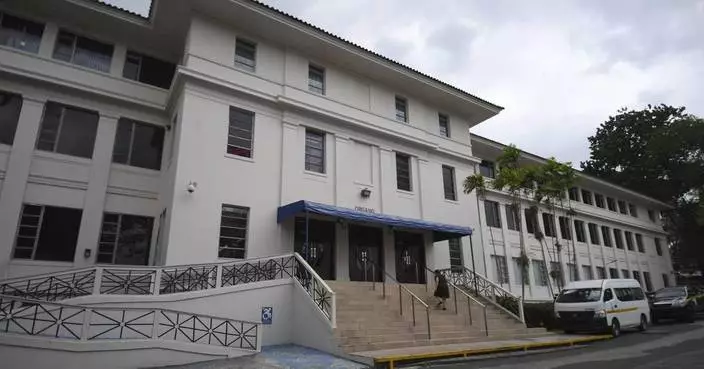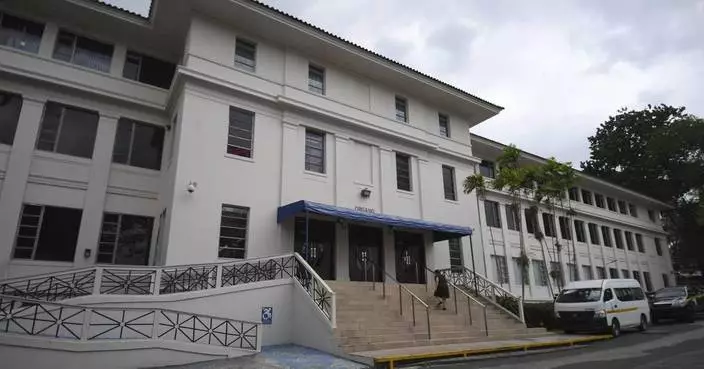Nine years ago, a trove of intricate gold artifacts were uncovered at a little-known archaeological site in Panama. The treasures dating from over 1,000 years ago included gold beads, strange ceramic pots, and chest plates engraved with delicate designs in forms such as a squid and human face.
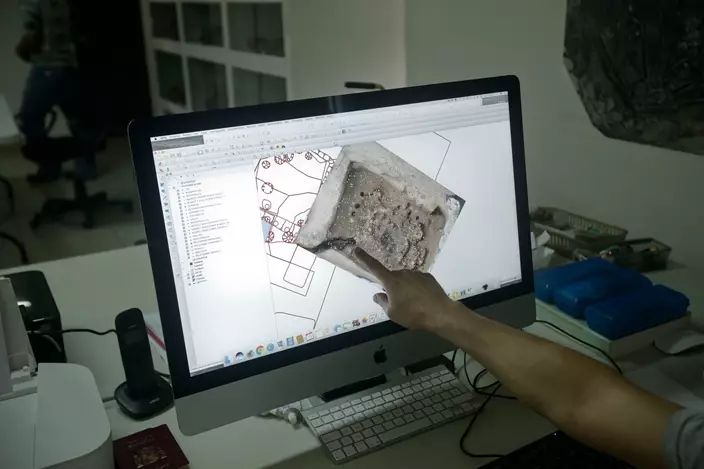
In this Sept. 19, 2017 photo, Carlos Mayo points to the location where artifacts were discovered at El Cano archaeological site, in a laboratory at the Foundacion El Cano in Panama City. After moldering for centuries in an offering-filled grave pit in the ruins of the Necropolis of El Cano, startlingly beautiful pieces are now hidden from public view in bank vaults or at a research facility. (AP Photo/Arnulfo Franco)
But since their discovery by archaeologist Julia Mayo in 2008, those artifacts have also sat in bank vaults and preservation offices in Panama City, leaving the country's little-known archaeological heritage an unintentionally well-guarded secret because the country has no archaeological museum.
Despite Panama's growing commerce and tourism industry, visitors have little opportunity to find out about the country's rich past.
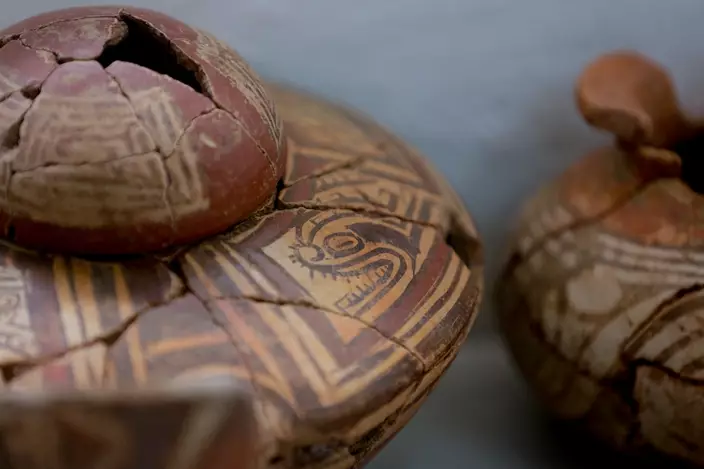
This Sept. 19, 2017 photo shows reconstructed pottery discovered in El Cano archaeological site, ready to be stored in a laboratory at the Fundacion El Cano, in Panama City. The pottery dates from between 900-1020 AD. (AP Photo/Arnulfo Franco)
That has left dozens of the startlingly beautiful pieces largely hidden from public view, even as the number of visitors flocking to see the country's skyscraper-studded capital and massive interoceanic canal has more than doubled from 1.1 million in 2011 to 2.6 million in 2016.
The artifacts, which were found in extensive graves at the Necropolis of El Cano, a site 115 miles (185 kilometers) west of Panama City, include jewelry and decorative objects interred in rich burial offerings.
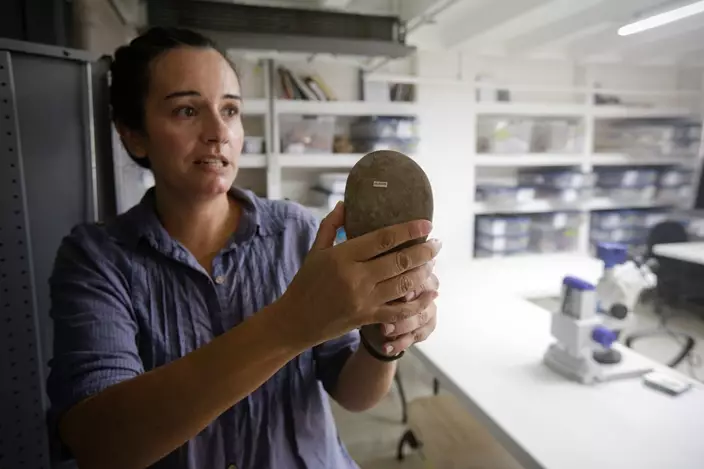
In this May 7, 2016 photo, Dr. Julia Mayo shows a stone axe discovered at El Cano archaeologic, site, at the Fundacion el Caño, in Panama City. The stone axe is about 1000 years old. (AP Photo/Arnulfo Franco)
The tombs, some containing remains of as many as 42 people, were constructed between 700 and 1020 AD by a largely unknown people in an archaeological region known as Gran Cocle.
As experts have worked to understand their cultural significance, however, they have also begun to turn their attention to establishing a permanent home for them.

In Sept. 19, 2017 photo, a worker pieces together shards of pottery that were discovered at El Cano archaeological site, at the Fundacion El Cano in Panama City. Panama's archaeological heritage remains little known, despite the fact that researchers unearthed an amazing hoard of gold pre-Hispanic artifacts a decade ago. (AP Photo/Arnulfo Franco)
Officials are working to remodel a now-closed archaeological museum in downtown Panama City and to open a site at the ruins to put the artifacts on display.
Panama City's Reina Torres de Arauz Museum was closed five years ago and is awaiting repairs, but is expected to be reopened in 2019.
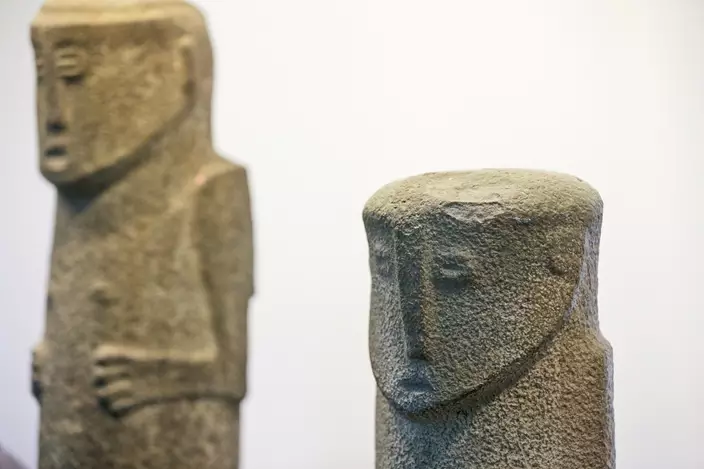
In this May 7, 2016 photo, monoliths discovered in El Cano archaeologic site are displayed at Fundacion el Caño in Panama. Panama's archaeological heritage remains little known, despite the fact that researchers unearthed an amazing hoard of gold pre-Hispanic artifacts a decade ago. The anthropomorphic sculptures where discovered in in 1920's. (AP Photo/Arnulfo Franco)
Orlando Hernandez, museum coordinator for the National Culture Institute, said the country's museums have long been in decline.
"The public is seeing the imperative necessity for Panama to have some museums that reflect the economic development that we have, but it is an old problem for almost 40 years and we can't fix it one day to the next," he said.
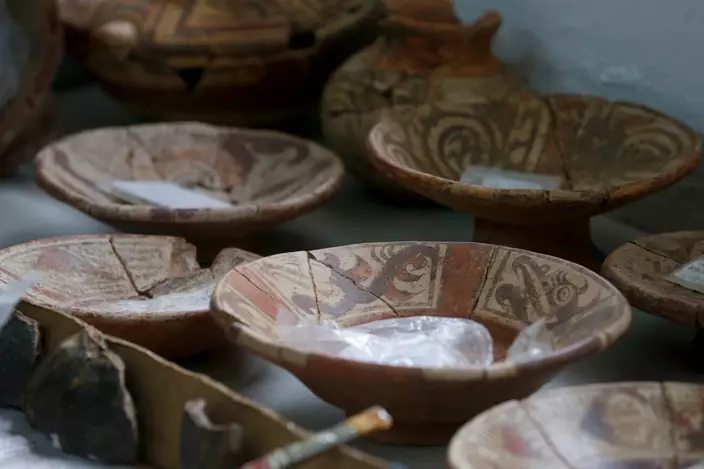
This Sept. 19, 2017 photo shows pottery with pre-hispanic designs discovered at El Cano archaeological site in a laboratory at El Cano Foundation, in Panama City. The pieces date from about 900-1020 AD. (AP Photo/Arnulfo Franco)
Panama is currently the only Central American country without such a museum.
As a temporary fix in the meantime, officials hope to spruce up a small museum at the excavation site that could be used to display some of the discoveries.
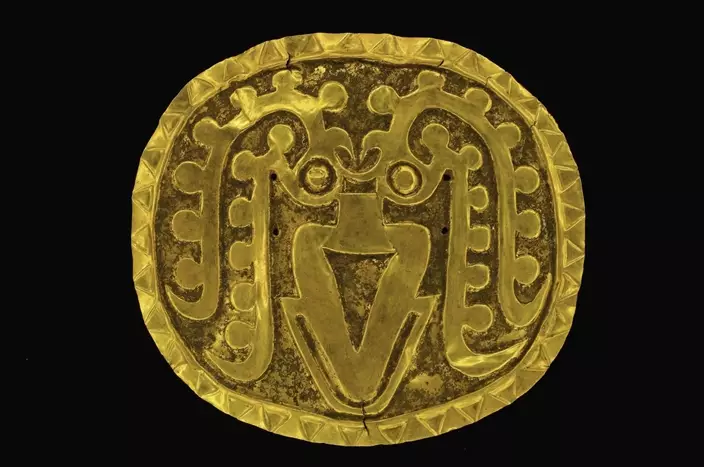
In this March 2010 photo provided by Fundacion El Cano, a gold pectoral with a design of a squid is displayed at the Foundation el Cano in Panama City. Hammered gold bracelets and chest plates are engraved with delicate designs, some suggesting surprising forms: a squid, and a smiling, fanged face. There are gold beads, and strange ceramic pots with human features. (Fundacion El Cano via AP)
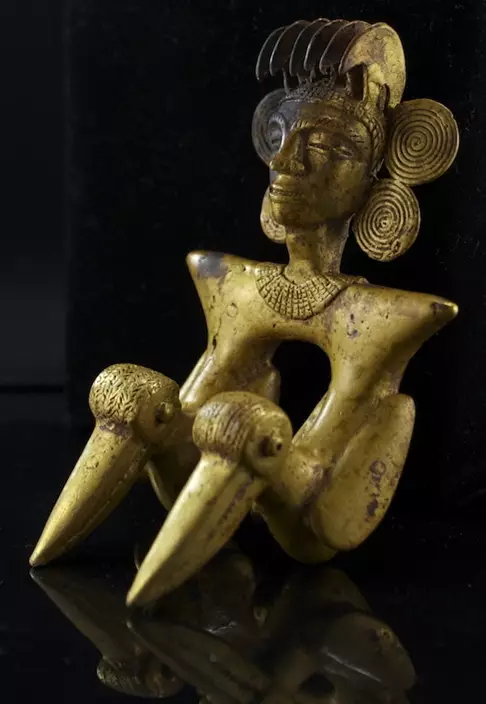
This Sept. 2009 photo provided by Fundacion El Cano, shows a gold earring discovered at the El Cano archaeological site, in Panama City. Hammered gold bracelets and chest plates are engraved with delicate designs. (Fundacion El Cano via AP)






